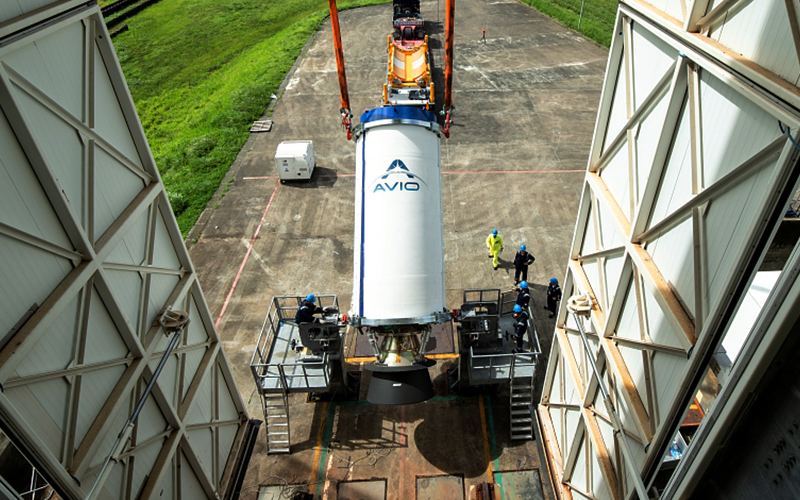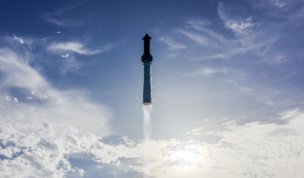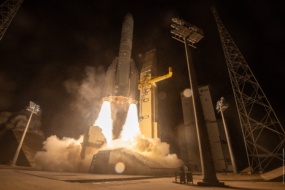Ukraine’s space agency has questioned the findings of an independent inquiry formed to investigate the failure of a Vega C launch vehicle last December. The failure resulted in the loss of two Airbus Pléiades Neo Earth observation satellites.
The independent inquiry’s findings
Following a successful first stage separation and second stage ignition, a progressive decrease in the chamber pressure of the stage was observed 151 seconds into Vega C flight VV22 on December 20, 2022. The mission failed shortly thereafter.
After reviewing flight data, an independent panel set up by Arianespace and the European Space Agency (ESA) concluded that the Zefiro 40 second stage had suffered an unexpected thermo-mechanical over-erosion of a throat insert.
What is a throat insert?
Solid rocket motors are fairly straightforward when sized up alongside their liquid-fueled counterparts. A motor case, which is essentially a tube, is packed with propellant grain, and a cavity is left at its center. An igniter is placed at the top of the cavity and a throat insert at the bottom.
Once ignited, the propellant grain burns from the inside out, releasing hot gasses that are forced down the cavity and into the throat insert. This creates a supersonic stream that powers the rocket. Unexpected degradation of a throat insert results in a loss of thrust—and possibly a loss of directional control, as the insert would be unlikely to degrade uniformly.
Loss of thrust occurred during the Vega C VV22 flight and resulted in mission failure.
The throat insert identified as the root cause of the failure was manufactured by Yuzhnoye, a satellite and rocket developer based in Dnipro, Ukraine. The State Space Agency of Ukraine has pushed against the Arianespace-ESA panel’s assertion.
The statement
In its response to the findings of the independent inquiry, the State Space Agency of Ukraine stated that all products delivered by its space industry “were completely compliant with the requirements imposed.” This may very well have been the case.
Speaking at a March 3 media briefing, inquiry co-chair Giovanni Colangelo stated that the carbon-carbon material used for the Vega C qualification testing and the inaugural flight was better than required. The material aboard the failed V22 flight was exactly to spec, indicating an issue with the specifications rather than the material.
So, why then did the independent inquiry recommend using an alternative from ArianeGroup?
According to Giulio Ranzo, CEO of Avio, which is the industrial prime contractor for the Vega and Vega C launchers, the company had already been working on sourcing an alternative for the Yuzhnoye-supplied carbon-carbon material in an effort to mitigate supply chain uncertainties prompted by the war in Ukraine.
A failure to communicate
Despite indicating that the quality control of Yuzhnoye wasn’t the root cause during the media briefing, the ESA press release that accompanied the briefing appears to indicate the opposite.
“Additional investigations led to the conclusion that this was likely due to a flaw in the homogeneity of the material,” states the release. “The Commission has therefore concluded that this specific C-C material can no longer be used for flight.”
Considering the fact that a superior version of the material performed well during Vega C testing and its maiden mission, Yuzhnoye has demonstrated that it is capable of producing a flight-ready throat. The press release also does not once mention the fact that Avio had been sourcing alternatives even prior to the failure of flight VV22.
There appears to have been a fairly significant breakdown of communications, with the State Space Agency of Ukraine as confused as the rest of us. Here’s hoping additional updates will follow soon.




